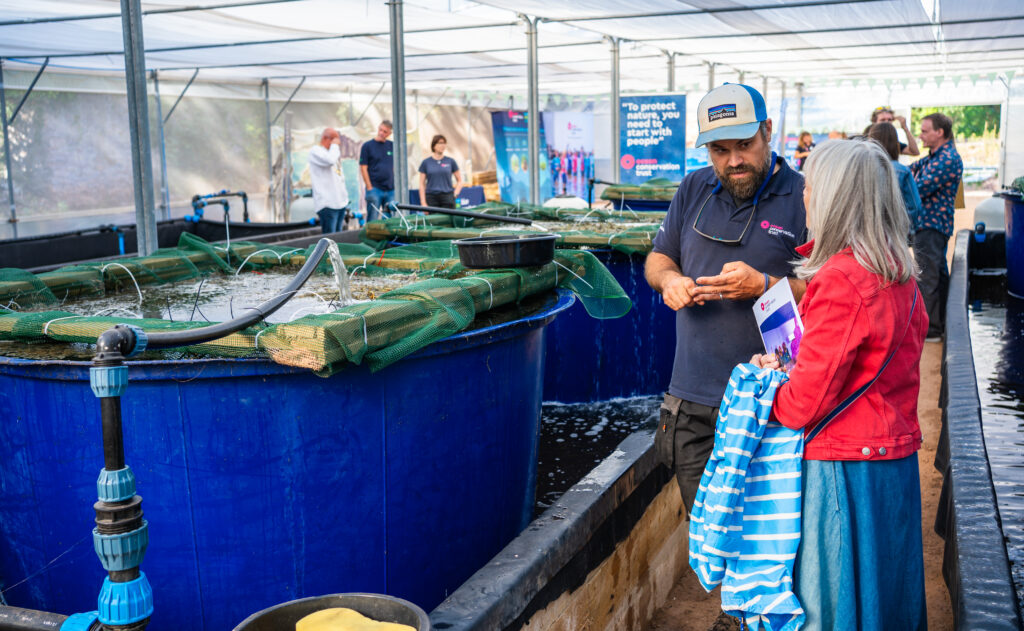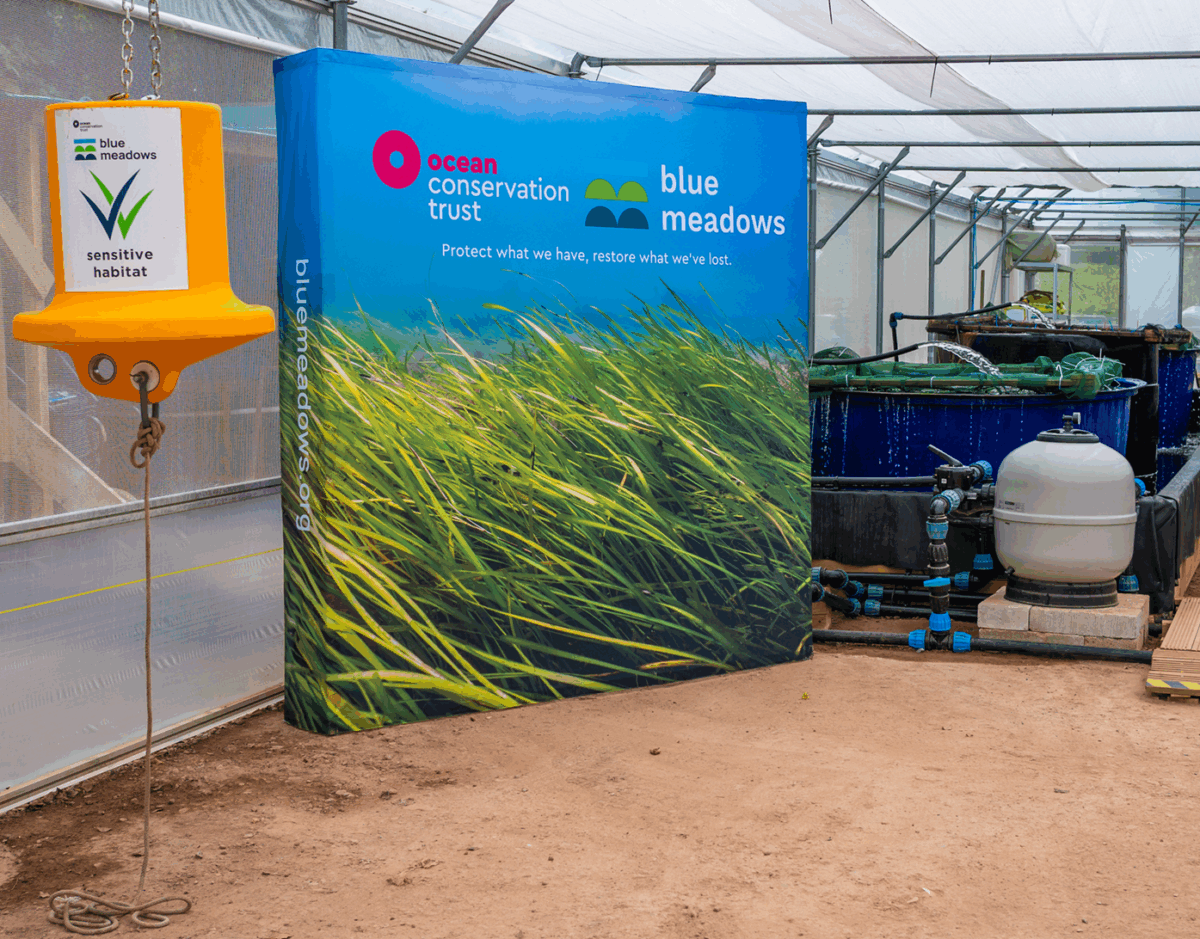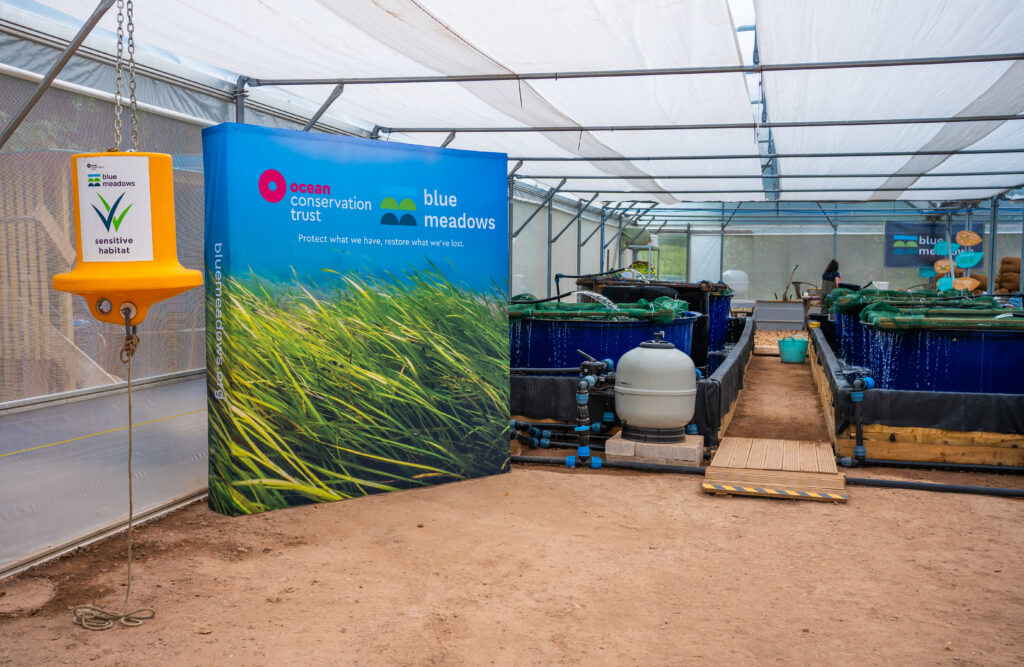
I recently had the opportunity to attend the official launch of the UK’s National Seagrass Nursery, held by the Ocean Conservation Trust (OCT) as part of its Blue Meadows project. Based on the River Dart, in Devon, the National Seagrass Nursery spans 400 square metres, making it the largest of its kind in the UK. This exciting launch event brought together a variety of national and local stakeholders, all with a vested interest in safeguarding and restoring our seagrass meadows.

Seagrass plays a vital role in marine ecosystems, with a single hectare capable of supporting 80,000 fish and 100 million small invertebrates. These marine meadows are also important carbon stores, absorbing carbon up to 35 times more efficiently than tropical rainforests. Unfortunately, since the 1930s the UK has lost around 90% of its seagrass beds, with the decline driven by a combination of disturbance, disease and pollution.
The OCT’s Blue Meadows project is working to combat this decline, aiming to protect 10% of all UK seagrass meadows and restore 50ha of seagrass over the next decade. The National Seagrass Nursery is a key component of realising these ambitions, and I was lucky enough to enjoy a guided tour of the facility.
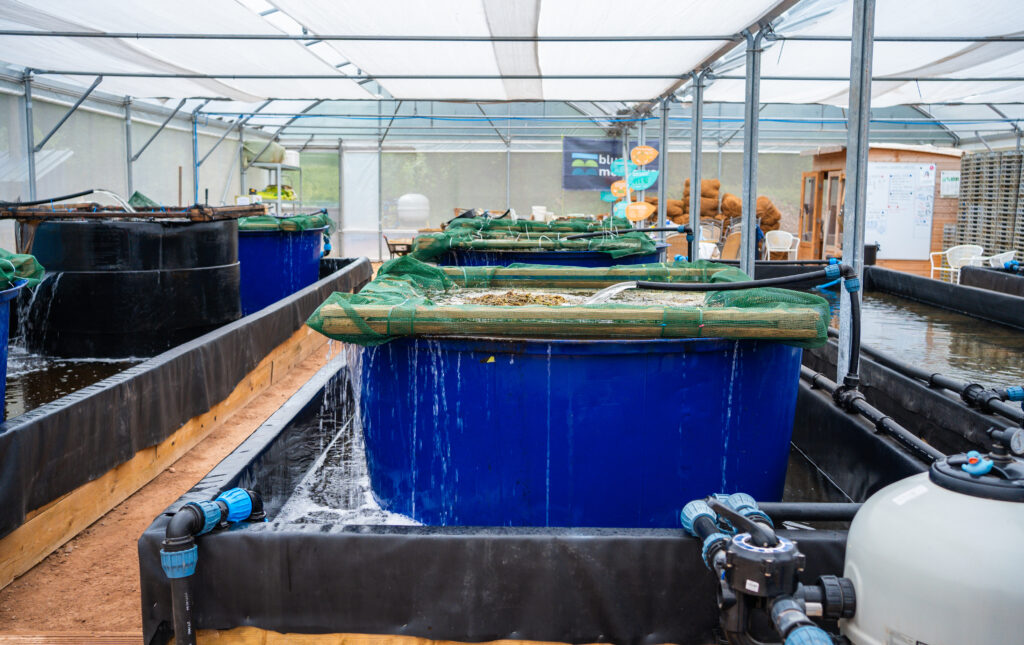
In recent years, the OCT has developed a two-pronged approach to subtidal seagrass restoration, using hydro marine seeding and seagrass mat technology in combination. Reflecting this dual approach, the nursery is divided into two sections. One side of the facility is dedicated to processing seagrass seeds that have been harvested from donor sites along the coast of the South West. These seeds are stored in large tanks and, over time, the organic matter that holds them against the flowering stem rots away, allowing the seeds to sink to the bottom. Some of these seeds will be planted directly into the seabed using the HMS OCToPUS, an innovative injection device reminiscent of a large caulking gun. Others will be taken to the other side of the nursery and planted into sand on hessian mats. These mats are then placed into shallow tanks of fresh seawater, which is pumped in from the nearby estuary. Here, they will grow into plantlets, and after 4–6 months they will be ready for planting into the seabed. The mats are then taken to the chosen restoration site and carefully pegged in place by divers.
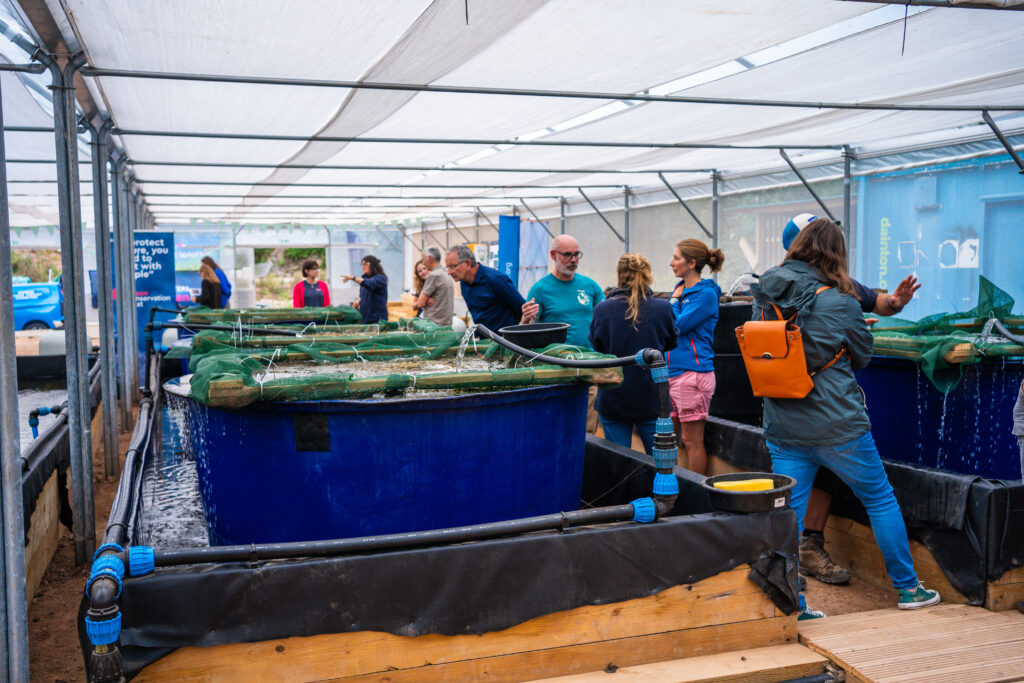
Despite the innovative facilities and technology on display at this event, what I was most impressed by was the knowledge and dedication of the team. OCT and its supporters have worked incredibly hard and have already seen some early success with 208ha of seagrass currently protected and 3ha restored. The launch of the National Seagrass Nursery represents an exciting step in UK seagrass restoration, and I am looking forward to seeing what the future holds for this initiative. You can learn more about the Blue Meadows project here.
